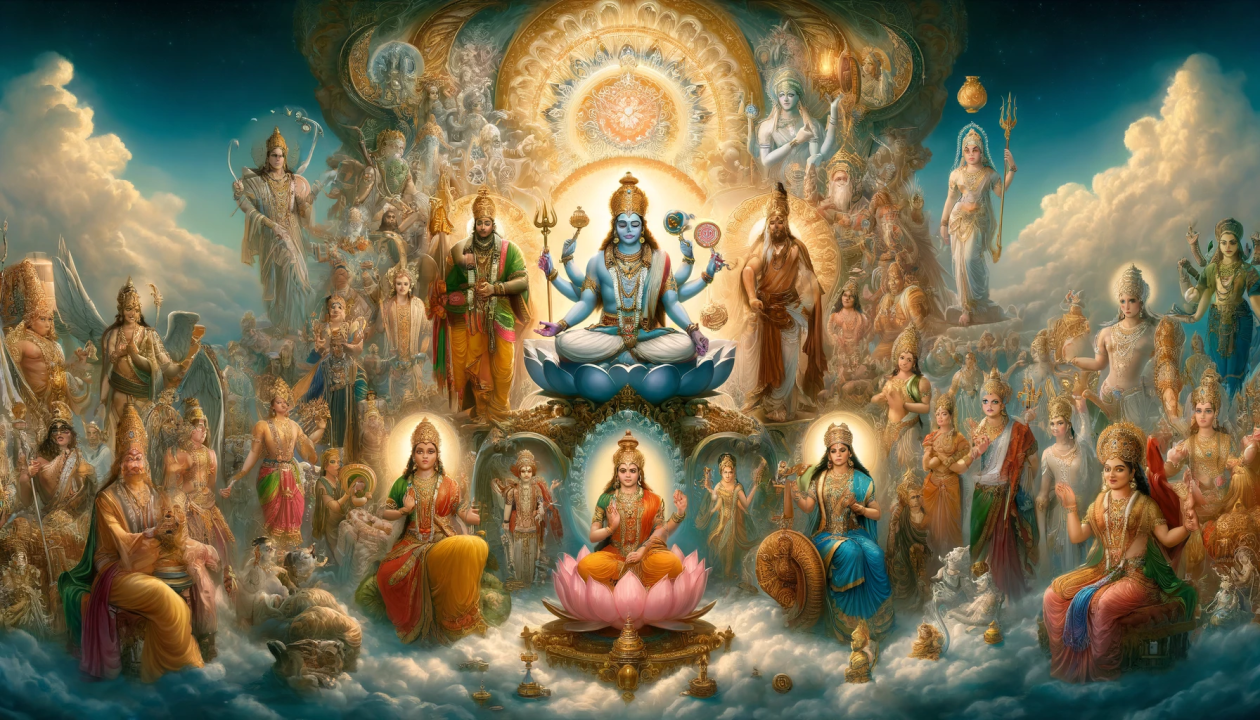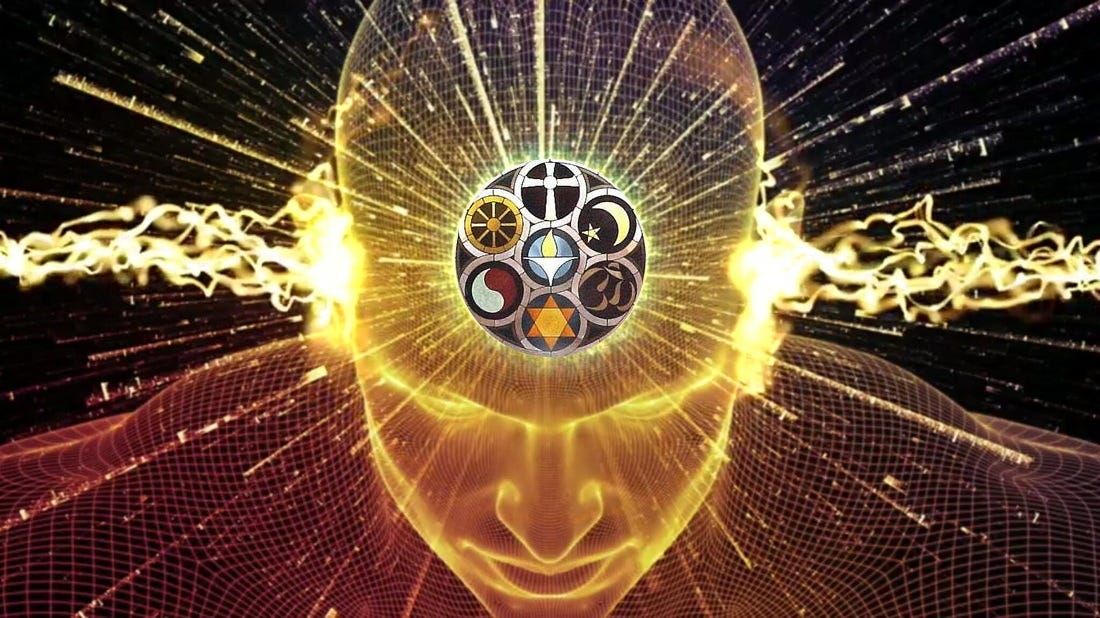zoomacademia.com – Hinduism, often referred to as the Sanatan Dharma (the Eternal Order or Eternal Path), is one of the world’s oldest and most complex religions. With over a billion followers, it is the third-largest religion globally, primarily practiced in India and Nepal, though its influence and presence extend worldwide. Hinduism is unique not only because of its ancient origins but also due to its diverse practices, beliefs, and philosophical schools. This article explores the key elements that define Hinduism, its sacred texts, and its enduring significance.
Origins and Historical Development
Hinduism has no single founder, no central religious authority, and no uniform system of beliefs. It is an amalgamation of various religious, cultural, and spiritual traditions that evolved over thousands of years. The roots of Hinduism can be traced back to the Indus Valley Civilization (around 3300–1300 BCE), one of the world’s earliest urban cultures. However, the foundations of Hindu religious thought as we know it today began to take shape around 1500 BCE with the arrival of the Indo-Aryans in the Indian subcontinent, bringing with them the Vedic traditions.
The ancient scriptures of Hinduism, known as the Vedas, were composed during this Vedic period (roughly 1500–500 BCE). These texts form the bedrock of Hindu philosophy, rituals, and cosmology. Over time, new religious ideas and practices emerged through a series of philosophical texts, epics, and spiritual movements that have shaped the religion into its present form.
Core Beliefs and Philosophy
At its heart, Hinduism is a complex, pluralistic tradition with a diverse array of beliefs. While there is no single, unified doctrine, several key concepts are foundational to Hindu thought:
1. Brahman – The Supreme Reality
Hinduism teaches that the ultimate reality is an all-encompassing, formless, and eternal entity called Brahman. Brahman is beyond human comprehension and is the source of everything in the universe. It is both immanent (present in all things) and transcendent (beyond the material world). Many Hindus believe that all living beings and the universe itself are manifestations of Brahman.
2. Atman – The Soul
Hinduism teaches that every living being possesses an eternal soul, called Atman. The Atman is an essential part of Brahman, and its true nature is divine and unchanging. The goal of human life is to realize this divine nature through self-discovery, meditation, and spiritual practice.
3. Dharma – Righteousness and Duty
The concept of Dharma refers to the moral order of the universe, as well as the code of ethical behavior and duty. Dharma varies according to a person’s age, caste, gender, and social position, but it fundamentally represents living in harmony with the universe and performing one’s duties with sincerity and righteousness. It guides individuals in making choices that align with cosmic law and personal integrity.
4. Karma – The Law of Cause and Effect
Karma refers to the principle that every action, thought, and deed has consequences. Good actions generate positive karma, leading to beneficial outcomes in this life or future lives, while bad actions create negative karma, which can result in suffering. Karma emphasizes personal responsibility and the interconnectedness of all beings.
5. Samsara – The Cycle of Birth, Death, and Rebirth
Hinduism teaches that life is cyclical, with birth, death, and rebirth (reincarnation) forming an ongoing cycle known as Samsara. This cycle continues until a soul achieves liberation, or Moksha. The soul’s journey through samsara is influenced by its accumulated karma.
6. Moksha – Liberation
Moksha is the ultimate goal in Hinduism: liberation from the cycle of samsara. It is achieved through self-realization, spiritual wisdom, and detachment from the material world. Moksha represents the reunion of the individual soul (Atman) with Brahman, realizing that the two are not separate.
Sacred Texts
Hinduism is a vast tradition with an extensive array of sacred texts. These scriptures can be broadly categorized into two groups: Shruti (that which is heard) and Smriti (that which is remembered).
1. The Vedas (Shruti)
The Vedas are the oldest and most authoritative scriptures in Hinduism. There are four Vedas: the Rig Veda, Yajur Veda, Sama Veda, and Atharva Veda. These texts consist of hymns, rituals, prayers, and philosophical discourses. They form the foundation of Hindu religious practice and philosophy.
2. The Upanishads (Shruti)
The Upanishads are mystical and philosophical texts that explore the nature of the self, the ultimate reality (Brahman), and the soul (Atman). They were composed toward the end of the Vedic period and mark the beginning of more introspective and meditative thought in Hinduism.
3. The Bhagavad Gita (Smriti)
The Bhagavad Gita, part of the Indian epic Mahabharata, is one of the most widely read and influential Hindu texts. It presents a conversation between Prince Arjuna and the god Krishna, who serves as his charioteer. In this dialogue, Krishna imparts spiritual wisdom on duty, righteousness, devotion, and the nature of the divine. The Bhagavad Gita synthesizes various paths to spiritual liberation, including the paths of devotion (bhakti), knowledge (jnana), and action (karma).
4. The Ramayana and Mahabharata (Smriti)
The Ramayana and Mahabharata are two great Indian epics that contain stories of divine heroes, kings, and battles. They are integral to Hindu culture and convey moral lessons, with the Ramayana focusing on the heroism of Prince Rama and the Mahabharata telling the story of the Kurukshetra War and the teachings of the Bhagavad Gita.
5. The Puranas (Smriti)
The Puranas are collections of myths, legends, and historical narratives that elaborate on the lives of gods, goddesses, and legendary heroes. Key Puranas include the Vishnu Purana, Shiva Purana, and Bhagavata Purana. These texts play a vital role in shaping the mythological framework of Hinduism.
Practices and Rituals
Hinduism encompasses a wide variety of religious practices, ranging from simple acts of devotion to elaborate rituals. Some of the common practices include:
- Puja: Worship rituals that involve offerings of flowers, food, and prayers to deities. Puja can be performed at home or in temples.
- Meditation and Yoga: These spiritual practices are used to cultivate inner peace, mindfulness, and self-realization. The most popular form of yoga in Hinduism is Raja Yoga, which focuses on meditation and mental discipline.
- Pilgrimages: Hindus often undertake pilgrimages to holy sites, such as the Ganges River in Varanasi, the temples of Southern India, and the sacred mountain of Mount Kailash.
- Festivals: Hinduism celebrates numerous festivals, including Diwali (Festival of Lights), Holi (Festival of Colors), Navaratri (Nine Nights Festival), and many others, each with its own significance and associated rituals.
Major Deities
Hinduism is a polytheistic religion, meaning it includes the worship of many gods and goddesses. However, all deities are seen as manifestations of the supreme reality, Brahman. Some of the principal gods and goddesses include:
- Brahma: The creator god, part of the Hindu trinity (Trimurti), along with Vishnu and Shiva.
- Vishnu: The preserver god, who maintains the order of the universe. He incarnates in various forms (avatars), including Krishna and Rama.
- Shiva: The destroyer and transformer god, who is associated with destruction, regeneration, and asceticism.
- Devi (Goddess): Hinduism recognizes the divine feminine in various forms, such as Durga, Lakshmi, Parvati, and Saraswati, representing power, wealth, love, and wisdom.
Hinduism in the Modern World
Today, Hinduism is a dynamic and evolving tradition. It continues to be deeply intertwined with the culture, politics, and social life of India, where it has shaped art, literature, music, and philosophy for millennia. However, Hinduism’s influence extends globally, particularly in the areas of yoga, meditation, and mindfulness, which have gained popularity as secular spiritual practices in the West.
Hinduism’s emphasis on tolerance, diversity, and individual spiritual paths makes it a resilient and adaptable faith that has persisted for thousands of years. Whether through the pursuit of knowledge, devotion, or righteous action, Hinduism offers a rich, multifaceted approach to understanding life, the universe, and the divine.
Hinduism is not merely a set of religious practices but a way of life that continues to inspire millions to explore the mysteries of existence, to seek self-realization, and to live harmoniously with the world around them. Its enduring legacy remains a testament to the timeless appeal of its philosophical and spiritual insights.







